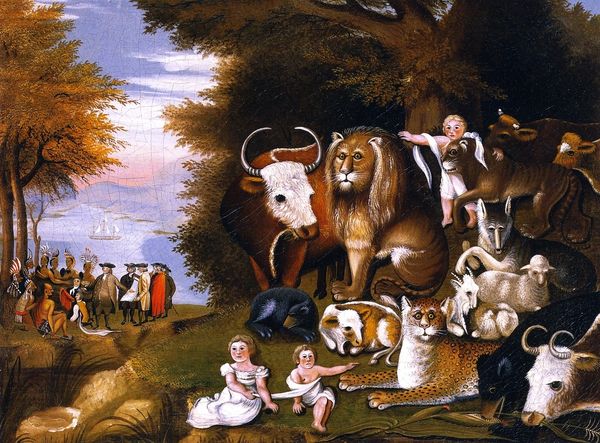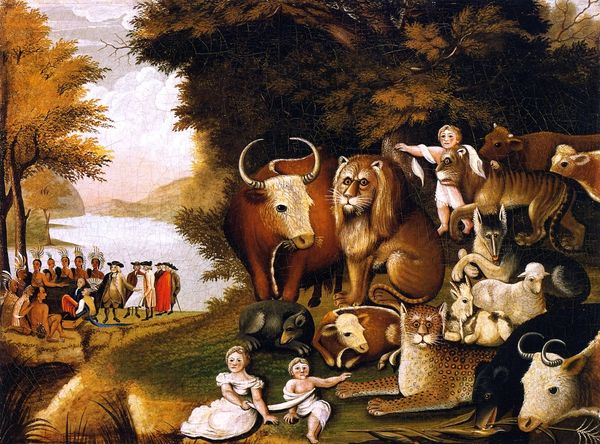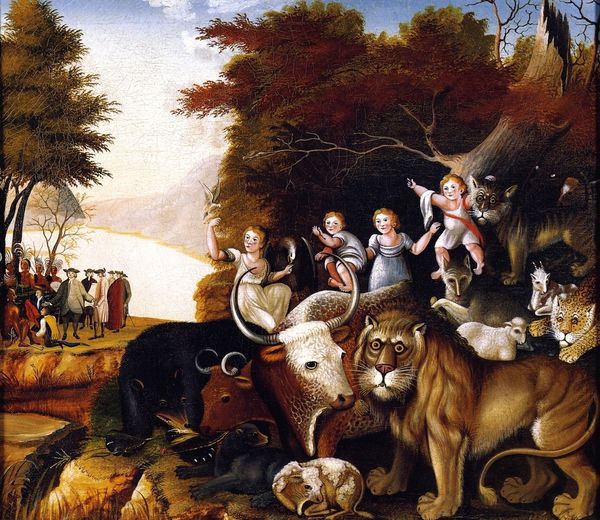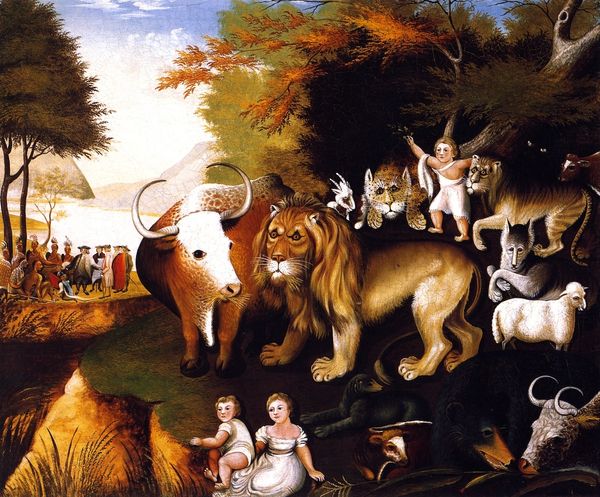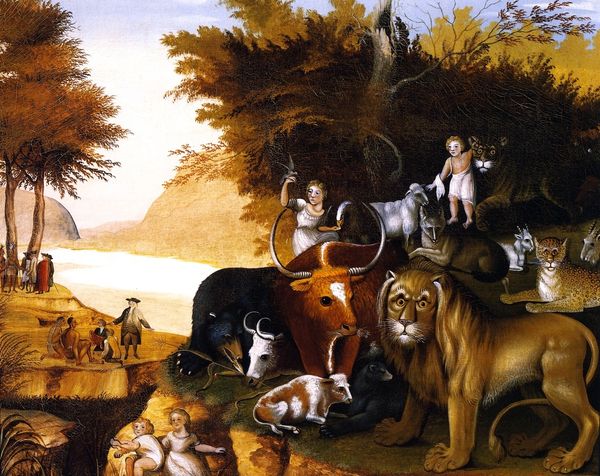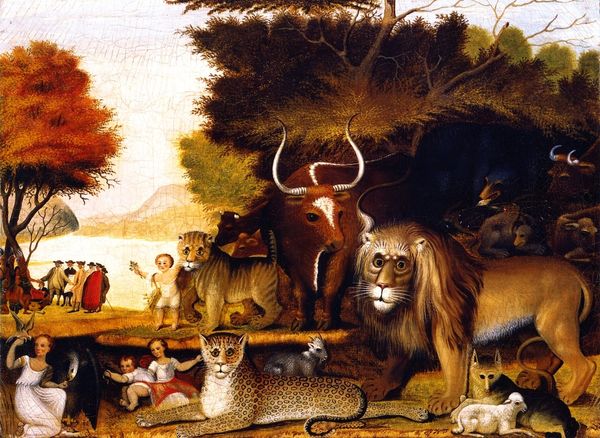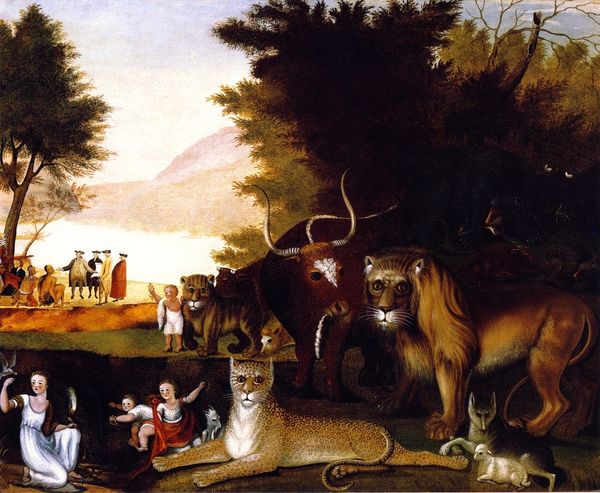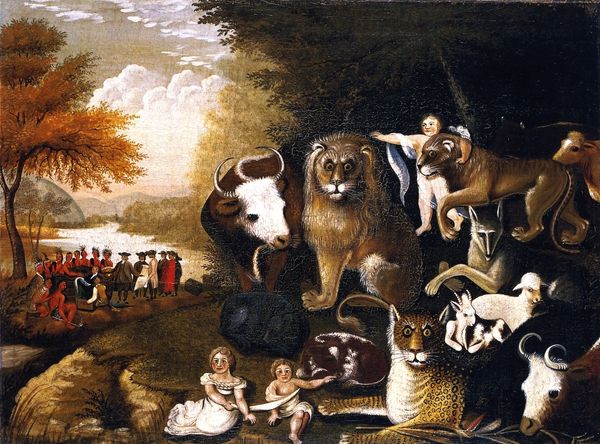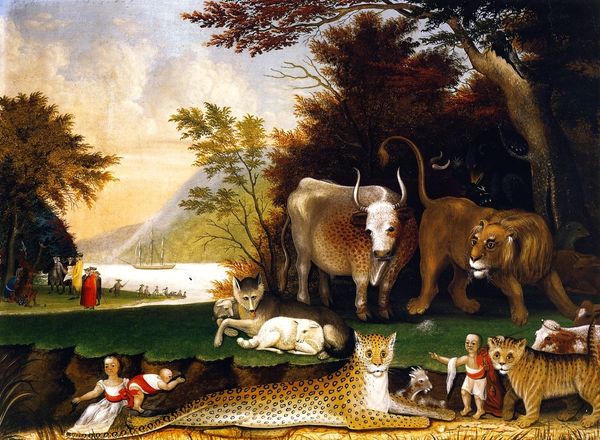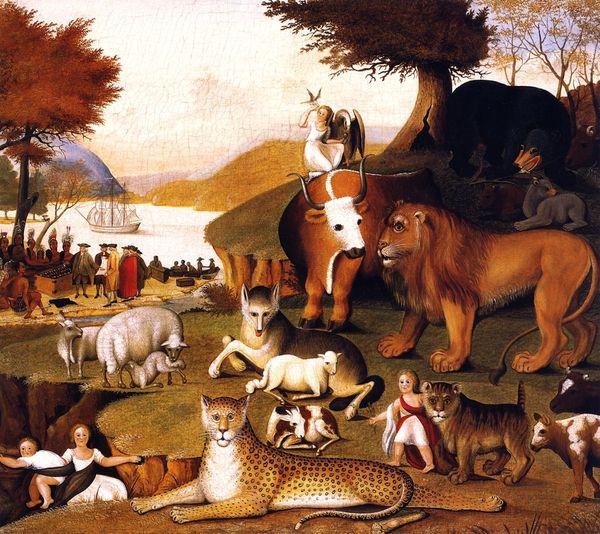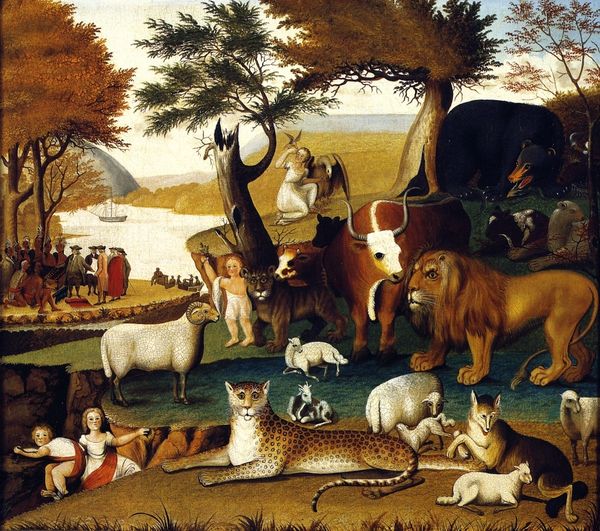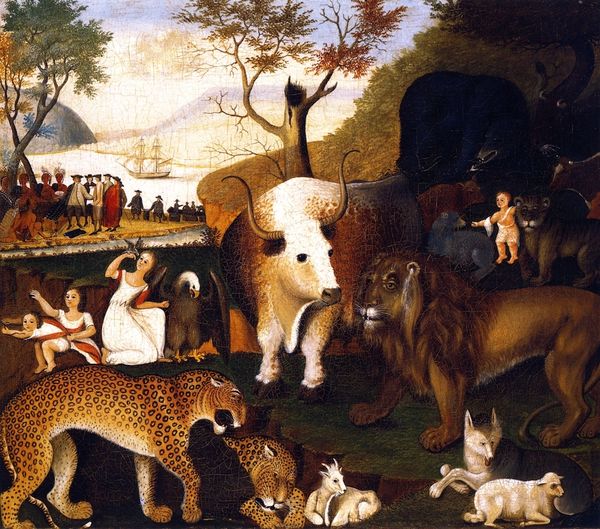
mixed-media, painting, oil-paint, fresco
#
mixed-media
#
allegory
#
narrative-art
#
animal
#
fantasy art
#
painting
#
oil-paint
#
landscape
#
figuration
#
fresco
#
hudson-river-school
#
mythology
#
painting painterly
#
history-painting
#
mixed media
Copyright: Public domain
Editor: This is Edward Hicks's "A Peaceable Kingdom" from 1832, painted in oil, and it strikes me as a surprisingly unsettling vision of harmony. How do you interpret this work, especially given its historical context? Curator: It’s crucial to view this through a lens that acknowledges the complex intersection of religion, politics, and colonialism in early 19th-century America. Hicks, a Quaker minister, draws upon the biblical prophecy of Isaiah, where the lion lies down with the lamb. However, this idyllic scene exists alongside a depiction of William Penn's treaty with the Lenape Native Americans. How do these two supposedly harmonious images complicate each other? Editor: That’s interesting. I hadn’t considered the treaty aspect critically. I guess it was always presented to me as a moment of peace and respect. Curator: Exactly, the painting prompts us to question whose "peace" is being depicted and at what cost. The Quakers had an admirable goal of peaceful coexistence. But their actions, however well-intentioned, still contributed to the displacement and cultural erasure of Indigenous peoples. Does this painting celebrate genuine reconciliation, or does it mask a more insidious narrative of colonization? Editor: So, the painting isn’t just about animals living in harmony, it's a statement—perhaps unintentional—about power dynamics? Curator: Precisely! Consider the positioning of the colonizers versus the Indigenous people. Who occupies the visual foreground? Whose narrative is centered? The "peaceable kingdom" serves as an allegory for a specific vision of America's future, one that's deeply entwined with the historical injustices faced by Native Americans. How can we reconcile this idyllic image with the reality of settler colonialism? Editor: This really shifts my understanding. It’s not just a naive illustration; it's a complex, potentially problematic commentary. I’ll never look at it the same way again. Curator: That's the power of art: to reveal uncomfortable truths and challenge us to critically examine the narratives we inherit.
Comments
No comments
Be the first to comment and join the conversation on the ultimate creative platform.
